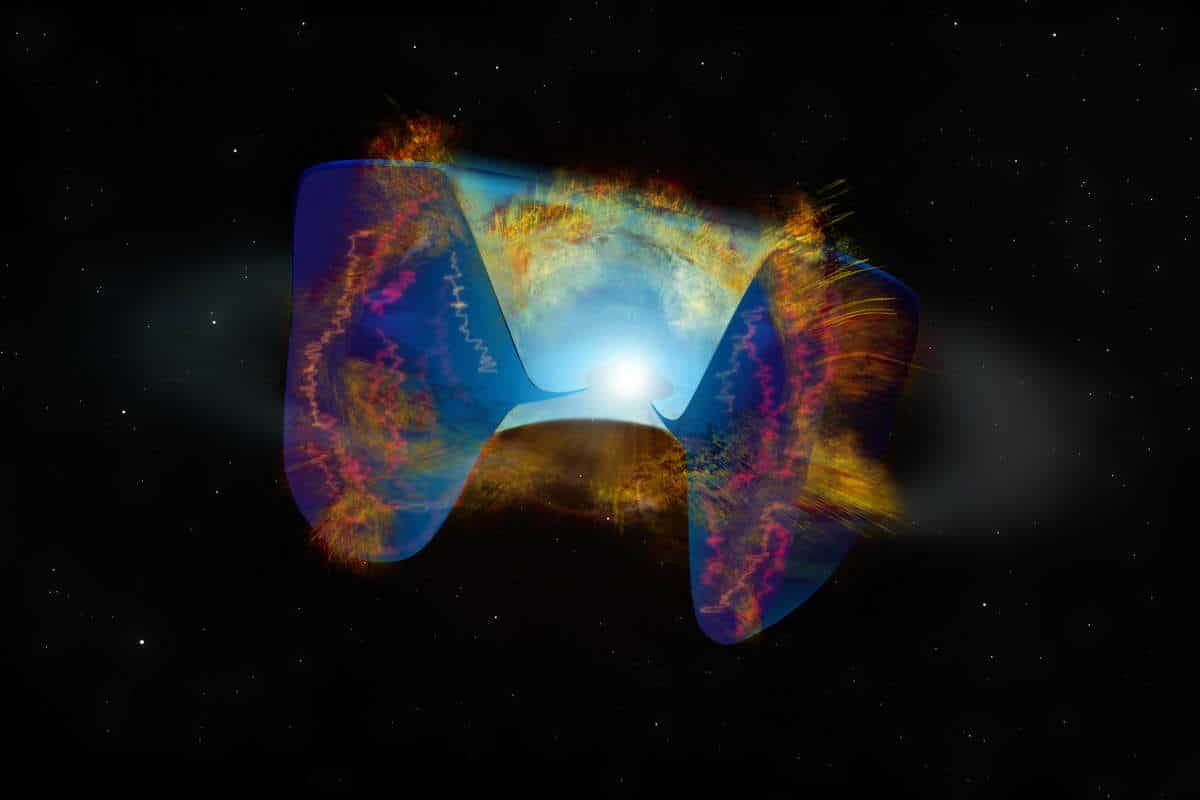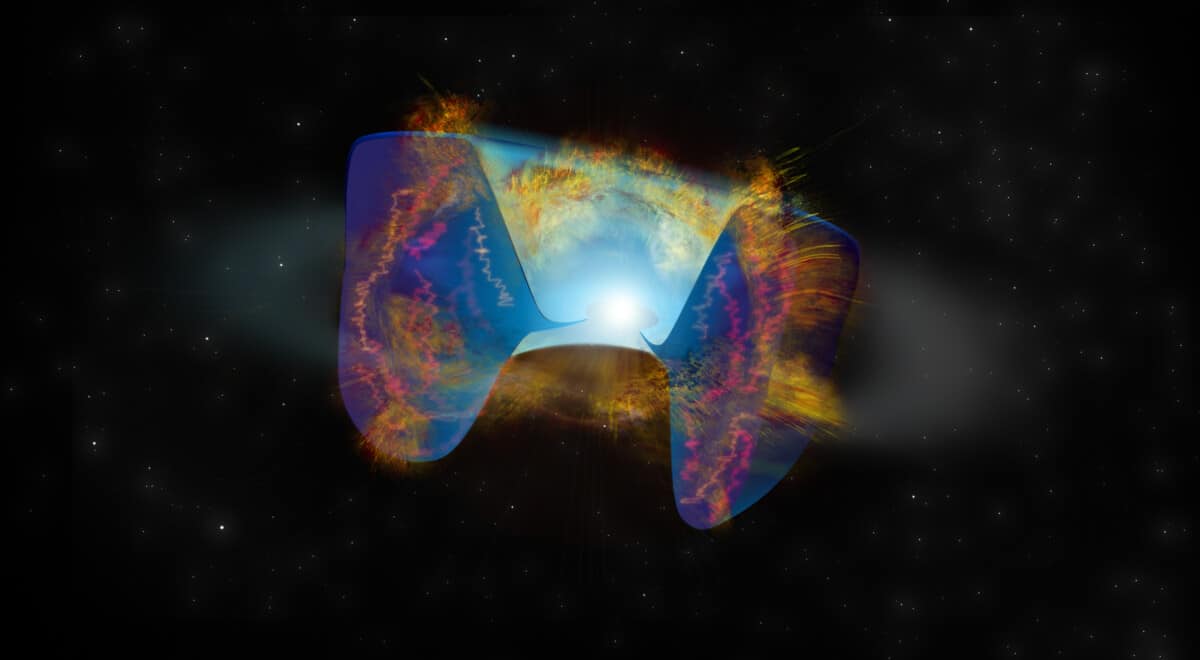
Astronomers have found evidence that a stellar collision can also lead to a supernova explosion.
A supernova is the phenomenon where a star explodes in a spectacular way. The eruption is recognizable by the enormous amount of light that is emitted. There are currently some known ways in which supernovae emerge (see box). But we can now add one more way, researchers in a new study.
A supernova can occur when white dwarfs explode in binary star systems (type Ia). In addition, types II, Ib and Ic occur when massive stars have reached the end of their lives and then form neutron stars or black holes. Types Ib and Ic differ from type II in that their precursors lose material surrounding their central core just before exploding. Type Ib and Ic are slightly different from each other in chemical composition.
Using data from the Very Large Array Sky Survey (VLASS), researchers have found for the first time evidence of a theoretically described supernova not previously spotted in the real Universe. “Theorists had predicted it could happen, but this is the first time we’ve actually seen such an event,” said study researcher Dillon Dong.
How it started
The first clue came when researchers examined images from VLASS and found an object emitting bright radio waves. Subsequent observations of this object – designated VT 1210+4956 – indicated that the bright radio emission came from a star-forming galaxy some 480 million light-years away. They later found that an instrument aboard the International Space Station had also detected a burst of X-rays from this object in 2014.
binary star
The data collected from all these observations allowed the astronomers to sketch the most likely scenario. They suspect that this is the fascinating history of a centuries-long dance of death between two massive stars. Like most stars much more massive than our sun, these two were born as a binary pair, orbiting each other in a close orbit. One was slightly more massive than the other and also evolved faster, generating energy at the center of the star through nuclear fusion. Eventually, this star exploded as a supernova, leaving behind a black hole or a neutron star.
dance of death
The black hole or neutron star then moved steadily closer to its companion. And about 300 years ago, when it entered the atmosphere of its stellar sister, the dance of death really began. The black hole or neutron star found its way all the way to the core of the companion star, brutally disrupting the nuclear fusion there. When the core collapsed, it briefly formed a disk of material that circled closely around the intruder, quickly sending a jet of material away. “This jet produced the X-rays seen by the MAXI instrument aboard the International Space Station,” Dong said.

Artist’s impression of the supernova explosion caused by a stellar collision. Image: Bill Saxton, NRAO/AUI/NSF
When the remnant of one star collided with its stellar sister, it also exploded as a supernova. “This stellar sister would have exploded eventually, but the merger accelerated the process,” Dong explains. It means that, for the first time, astronomers have found evidence that a stellar collision could also lead to a supernova explosion.
The researchers are very surprised by this special discovery. “The key to the discovery was VLASS,” said researcher Gregg Hallinan. Although one of his goals is to reveal transient objects such as supernova explosions, this supernova, caused by a star merger, was a real surprise. “Of all the things we thought we could discover with VLASS, we never thought it would be possible,” concludes Hallinan.
Source material:
“Stellar Collision Triggers Supernova Explosion” – National Radio Astronomy Observatory
Image at the top of this article: Bill Saxton, NRAO/AUI/NSF